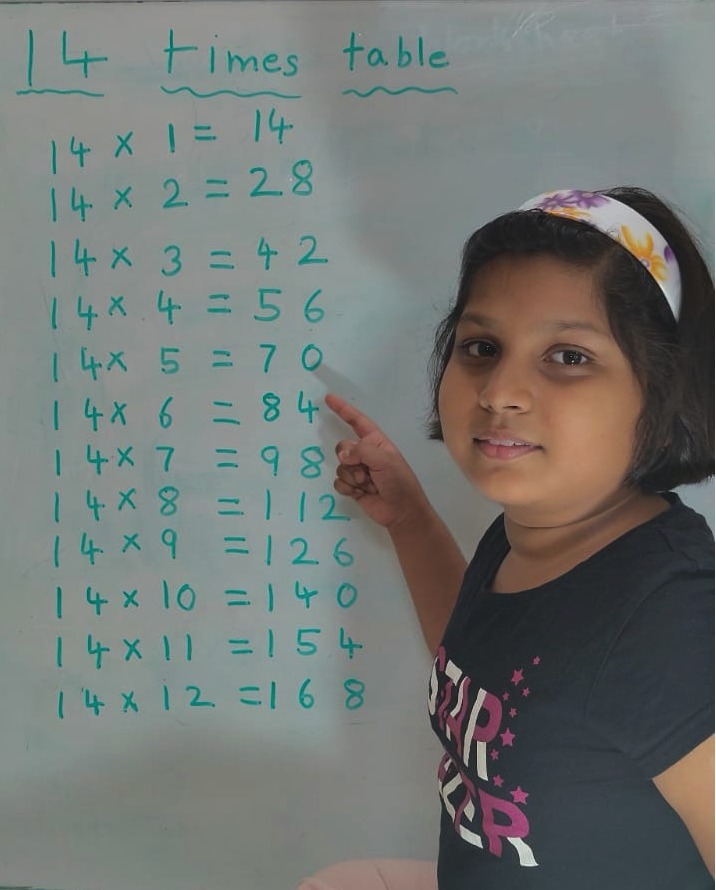Completing a Square
Here we will learn how to completing a square.
a2x2 + bx = a2x2 + 2 ∙ ax ∙ b2a
= {(ax)2 + 2ax ∙ b2a + (b2a)2} - (b2a)2
= (ax + b2a)2 - (b2a)2
a2x2 - bx = a{x2 - bax}
= a{x2 - 2x ∙ b2a + (b2a)2} - a ∙ (b2a)2
= a(x - b2a)2 - b24a
Solved Examples on Completing a Square:
1. What should be added to the polynomial 4m2 + 8m so that it becomes perfect square?
Solution:
4m2 + 8m
= (2m)2 + 2 ∙ (2m) ∙ 2
= (2m)2 + 2 ∙ (2m) ∙ 2 + 22 – 22
= (2m + 2)2 – 4.
Therefore, (4m2 + 8m) + 4 = (2m + 2)2 – 4 + 4 = (2m + 2)2.
So, 4 is to be added to 4m2 + 8m to make it a perfect square.
2. What should be added to the polynomial 9k2 – 4k so that it becomes perfect square?
Solution:
9k2 – 4k
= (3k)2 - 2 ∙ (3k) ∙ 23
= (3k)2 - 2 ∙ (3k) ∙ 23 + (23)2 - (23)2
= (3x - 23)2 – 49
Therefore, (9k2 – 4k) + 49 = (3x - 23)2 – 49 + 49 = (3x - 23)2
So, 49 is to be added to 9k2 - 4k to make it a perfect square.
3. What should be added to 16m4 + 9 to make it a whole square of a polynomial of the second degree?
Solution:
16m4 + 9
= (4m2)2 + 32
= (4m2)2 ± 2 ∙ (4m2) ∙ 3 + 32 ∓ 2 ∙ (4m2) ∙ 3
= (4m2 ± 3)2 ∓ 24m2
Therefore, (16m4 + 9) ± 24m2 = (4m2 ± 3)2 ∓ 24m2 ± 24m2
= (4m2 ± 3)2.
So, ± 24m2 is to be added to 16m4 + 9 to make it s whole square of a polynomial of the second degree.
4. Find k so that p2 – 5p + k can be a perfect square of a linear polynomial.
Solution:
p2 – 5p + k
= p2 – 2p ∙ 52 + k
= p2 – 2p ∙ 52 + (52)2 + k - (52)2
= (p - 52)2 + (k - 254)
So, p2 – 5p + k can be perfect square if k - 254 = 0, i.e., k = 254.
From Completing a Square to HOME PAGE
Didn't find what you were looking for? Or want to know more information about Math Only Math. Use this Google Search to find what you need.
Recent Articles
-
Vertical Subtraction | Examples | Word Problems| Video |Column Method
Mar 22, 25 05:20 PM
Vertical subtraction of 1-digit number are done by arranging the numbers column wise i.e., one number under the other number. How to subtract 1-digit number vertically? -
Worksheet on 11 Times Table | Printable Multiplication Table | Video
Mar 22, 25 05:08 PM
Worksheet on 11 times table can be printed out. Homeschoolers can also use these multiplication table sheets to practice at home. -
Worksheet on 10 Times Table | Printable Multiplication Table | Video
Mar 21, 25 03:46 PM
Worksheet on 10 times table can be printed out. Homeschoolers can also use these multiplication table sheets to practice at home. -
5th Grade Prime and Composite Numbers | Definitions | Examples | Math
Mar 21, 25 12:18 AM
5th grade prime and composite numbers -
14 Times Table | Read and Write Multiplication Table of 14| Video
Mar 20, 25 04:03 PM
In 14 times table we will learn how to read and write multiplication table of 14. We read fourteen times table as:One time fourteen is 14 Two times fourteen are 28 Three times fourteen are 42





New! Comments
Have your say about what you just read! Leave me a comment in the box below. Ask a Question or Answer a Question.